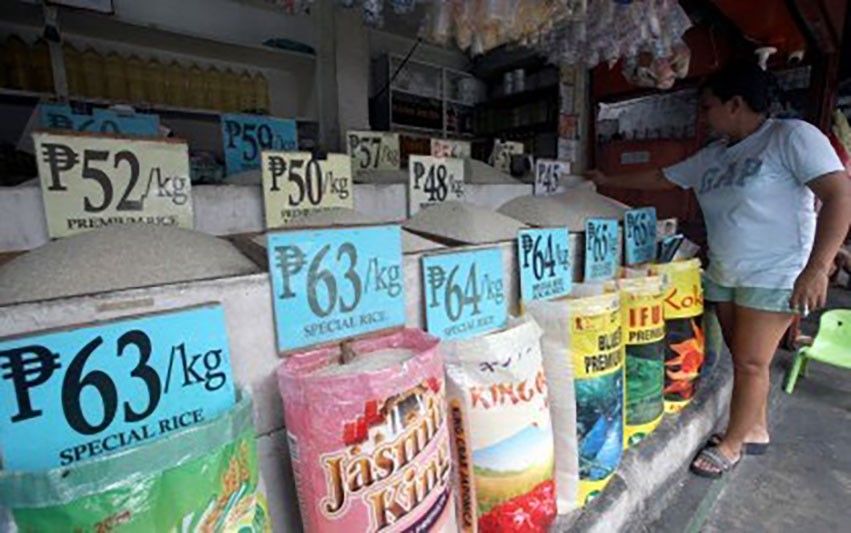Customs leads rice cartel / Landgrabbers infest Bugsuk

For sure there’s a rice cartel.
It’s evident in the retail price of the staple, P51 to P55 a kilo.
That’s despite three factors which should have pulled down prices:
• 20-percent slash of import tariffs, from 35 to 15 percent;
• Drop in world price when rice supply stabilized in July 2024;
• Drop in domestic palay price due to deluge of imports.
But what emboldens cartelists to manipulate prices, when such offense is nonbailable and fetches a P10-million fine and life term?
Simple, the Bureau of Customs is behind the cartel.
Rep. Nicanor Briones unearthed evidence of technical smuggling: “Imports are undervalued:
“BOC mysteriously does not ask importers to declare transaction value. Instead it uses reference values on different grain qualities, five-, ten-, 15- and 25-percent broken.
“BOC’s reference values were set in 2018, and have not factored inflation since then.
“Taking the cue from BOC, importers thus transact by confidential telegraphic bank transfers instead of open letters of credit.
“They just declare import costs lower than BOC reference values. Eh ‘di ayos na! They pay import duties based on BOC reference values.”
Briones heads AGAP (Agricultural Alliance of the Philippines).
Broadcaster Ted Failon exposed a parallel racket: “palubog” or under declaration. He explained in Radyo5 how it works:
“With BOC consent, importers declare only half of their cargo, say, only 100,000 tons instead of the real 200,000. In BOC parlance, nakalubog ang kalahati ng kargamento.
“Half the cargo is thus free of 15-percent duty. Only the other half is taxed. Importers make a killing.”
How much bribe or “tara” does BOC collect?
A 20-foot cargo container or “lata” holds 20 tons, so 200,000 tons require 10,000 lata. Tara per lata is P10,000. So 10,000 lata means tara of P100 million.
The P10,000 tara per lata is only for ordinary imports, not rice that’s in great demand, Failon said.
It can reach P170,000, going by the 2018 Senate testimony of import trucker Mark Taguba, who was implicated in shabu smuggling.
The country imports four million tons of rice each year, in 200,000 lata. Even at only P10,000-tara each, BOC will pocket P2 billion.
Palubog thrives in Limay, Bataan. Yet the BOC brass across the bay in Manila ignores it.
That’s because high officials have divided into two syndicates. One specializes in luxury vehicles, the other in rice. All are Malacañang appointees.
Farmers and consumers lose, said Raul Montemayor, Federation of Free Farmers national manager.
After cutting tariffs in July 2024, government has lost P13 billion. Under the Rice Tariffication Act, that money should have subsidized two million farmers. Consumers now pay P10 per kilo more than cheap imported and domestic rice.
The rice racket is no different from what Sen. Risa Hontiveros called the “government-sponsored sugar cartel.” In 2022-2023 President Bongbong Marcos handpicked only three companies, instead of the usual three dozen, to import sweeteners – at very high rates.
Food inflation resulted since then. Almost all goods, from bread and biscuits to processed meats and pasta, use sugar.
Planters and consumers suffer till today.

* * *
Authorities, wake up. Stop professional squatters disguised as tribals from illegally occupying private lands and public reserves.
The racket keeps recurring in remote islands. Landgrabbers hire sly lawyers and fool bishops into supporting supposed peasants evicted from plantations. Dressed in rags, the “victims” march to provincial capitols or to Manila for publicity. Clerics, local newsmen and bleeding hearts are made to whip up “mass support.”
In the end the syndicate boss wins and takes control of the targeted hundreds-hectare property. The cast of extras are paid off and told to wait for the next “palabas.”
It happened in Bukidnon in the 2000s. Fake ethnic minorities were portrayed as victims when, in truth, they were land reform beneficiaries who illegally sold farms that government allotted to them.
About that time in Zamboanga del Sur, Manobo “tribesmen” appeared from nowhere and occupied a mine site. Reading it in the newspapers, I immediately doubted the “tribals’” claim. Manobos are from Eastern Mindanao: Bukidnon, Davao, Surigao, Agusan. The main ethnic group in Zamboanga del Sur is Subanon, I recalled from anthropology school. Good that the governor evicted the fakes.
In Calauit Island, Palawan in 2016, squatters arrived from an adjacent isle where authorities forbade them from catching endangered dugong or sea cow. Three friends and I had choppered food for park rangers in Calauit Island Safari. We saw a giraffe struggling to chomp on tree leaves with its intestines pouring out of the belly.
A squatter had speared it and an accomplice had shot a zebra supposedly for food.
Now, fake tribals are invading Bugsuk Island in Palawan’s Balabac town. They claim to have been evicted by the Department of Agrarian Reform to favor San Miguel Corp. and Jewelmer Corp. Yet those two companies have been operating there many years ahead of the “victims’ ages.”
The genuine tribe leader in another island has exposed the impostors. Still, the latter are adept at shooting out press releases about supposed maltreatment.
* * *
Catch Sapol radio show, Saturdays, 8 to 10 a.m., dwIZ (882-AM).
Follow me on Facebook: https://tinyurl.com/Jarius-Bondoc
- Latest






















